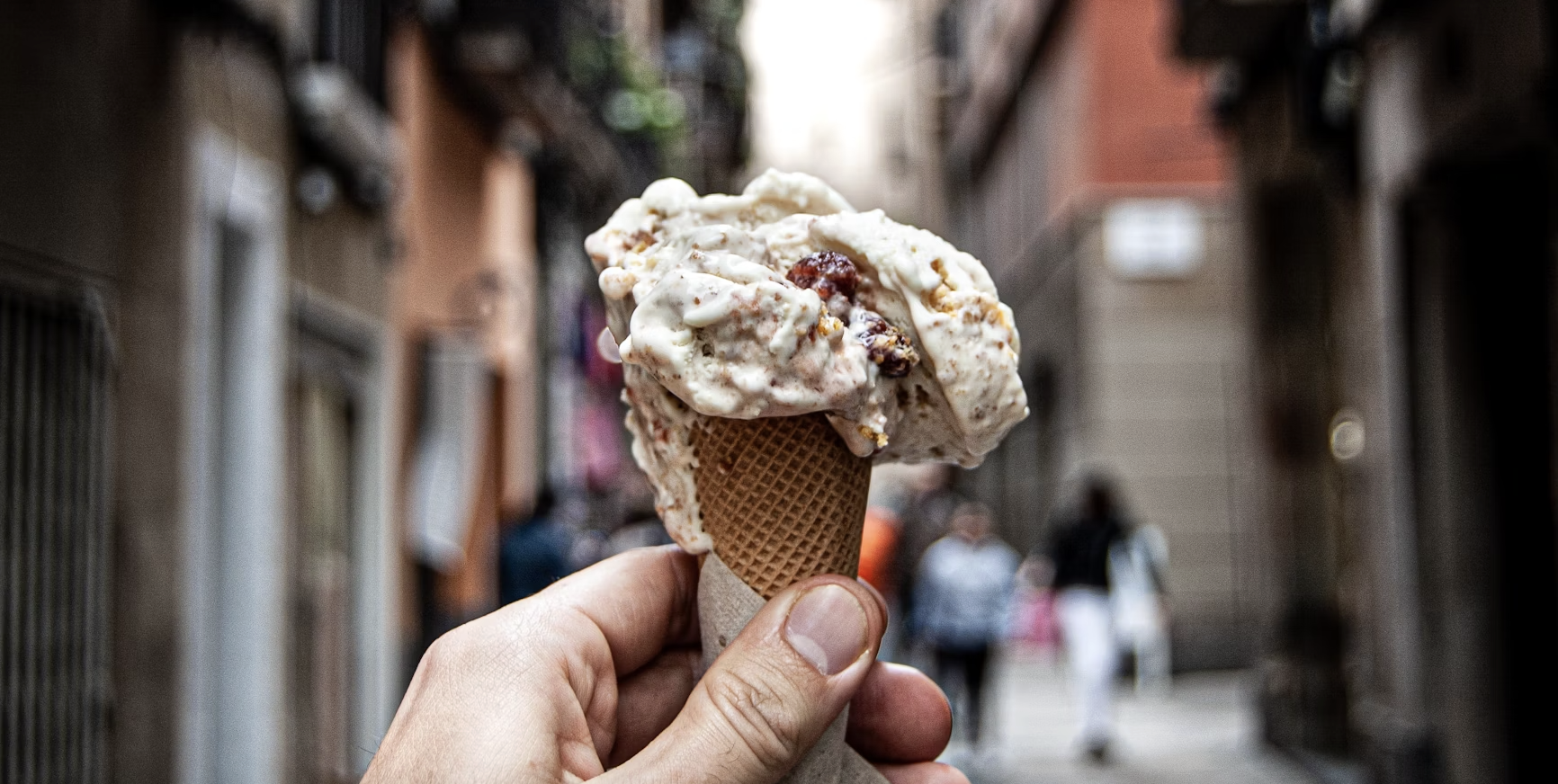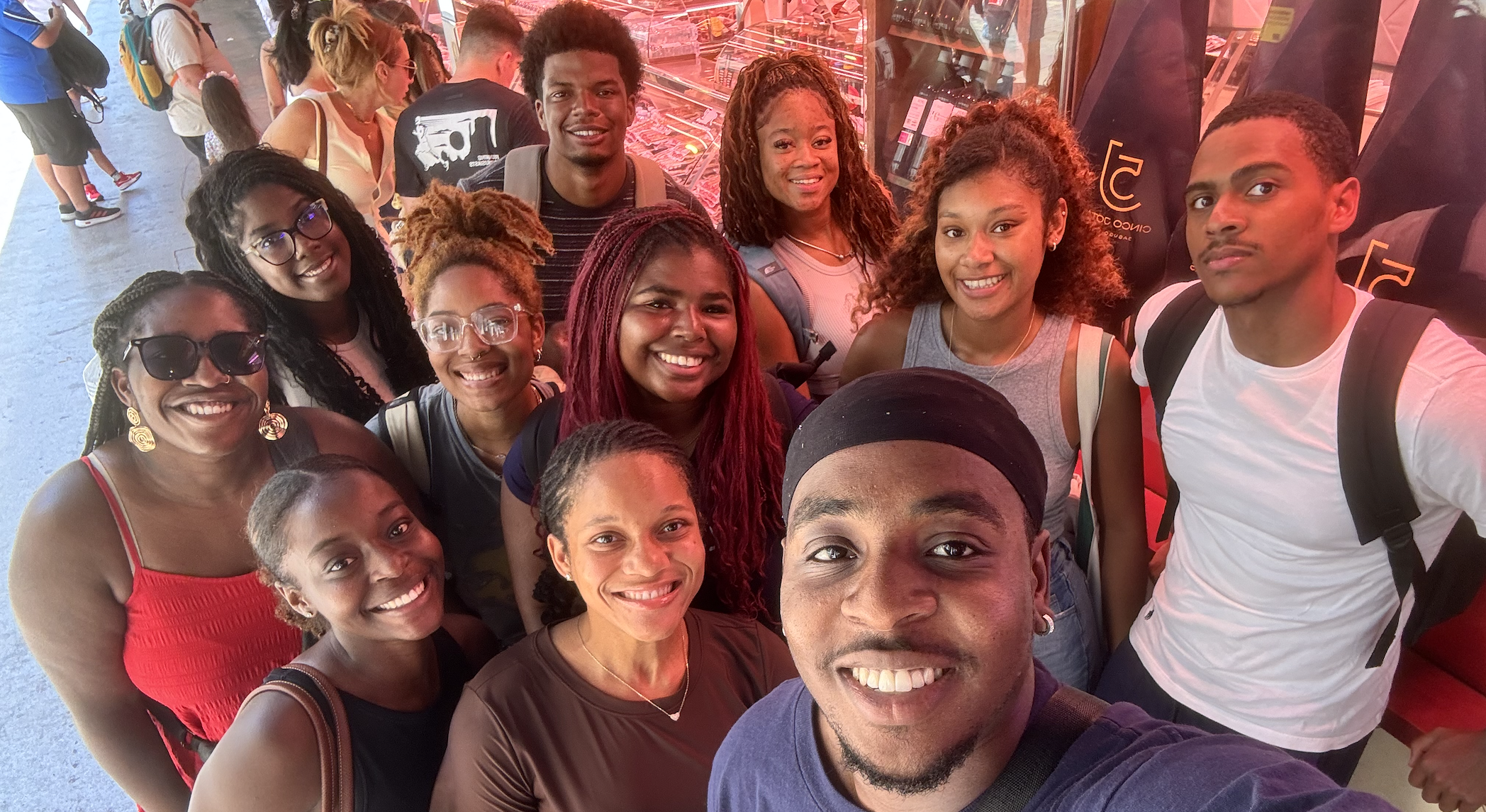In March 2020 when COVID began, students returned to the U.S. from respective study abroad locations, and what we’d hoped would be a relatively short disruption, slowly turned into a reality that would be here to stay.
Students were studying online, study abroad programs were discussed and then cancelled, and we had little knowledge of when life would return, even to a ‘new normal.’ Carefully and cautiously, plans for the IWU Barcelona Program continued moving forward. We held in person and virtual meetings with students to plan the three month experience, discussed COVID safety in Spain, culture transition, what to expect, answered parent questions, and reviewed final COVID testing procedures to occur 72 hours before departure.[image_with_animation image_url=”6464″ animation=”Fade In” hover_animation=”none” alignment=”” border_radius=”none” box_shadow=”none” image_loading=”default” max_width=”100%” max_width_mobile=”default”]Arriving in Barcelona – February 2021
Not until passing through passport control in Barcelona did we truly stop holding our breath. It was hard to believe we’d truly made it! Excited and exhausted students were shuttled to their home stays and our Barcelona SAE orientation began the next day. Students Enjoying Our Barcelona SAE Orientation
Students Enjoying Our Barcelona SAE Orientation
Students spent the first 6 weeks exploring the city, finding favorite places and shopping in stores permitted to be open. Barcelona SAE arranged near weekly day trips to neighborhoods in BCN, hiking in Montjuic, and Collserola, cooking classes (divided into smaller COVID friendly groups) and Casa Mila, a magnificent apartment building designed by Antoni Gaudi. Six weeks into our stay restrictions lifted slightly and we could travel within Catalonia. Barcelona SAE took us on two day trips and one weekend trip. We’ve enjoyed museums, Flamenco dancing at the Palau de Musica, and students have planned trips independently two weekends. [image_with_animation image_url=”6643″ animation=”Fade In” hover_animation=”none” alignment=”” border_radius=”none” box_shadow=”none” image_loading=”default” max_width=”100%” max_width_mobile=”default”]
Celebrating Birthdays, COVID-Style!
[image_with_animation image_url=”6645″ animation=”Fade In” hover_animation=”none” alignment=”” border_radius=”none” box_shadow=”none” image_loading=”default” max_width=”100%” max_width_mobile=”default”]IWU Group Bonding at Parc Ciutadella
I meet weekly with students in small groups for lunch, and audit the Spanish and art history class with them (big bonus for me!), allowing me to more closely attend to the transition and their lives. While I’ve heard a few wistful comments about the inability to travel further within Spain and Europe, the overwhelming consensus by students is that they love this city without the throngs of tourists. Having been to Barcelona many times, I couldn’t agree more. Students found favorite spots like the bunkers, Parc Ciutadella, and the beach make the city feel even more like home. With only a few weeks remaining they’re making lists of places they’ve yet to explore and to which they want to return.The COVID restrictions in Barcelona are stricter than in the U.S. Spain’s highly social culture would typically be evidenced by crowds of people sitting in and outside of restaurants late into the night. Currently, restaurants may serve breakfast and lunch with limited capacity, however, dinner is ‘para llevar’ only. Despite the low risk of contact transmission we bathe in sanitizer entering any establishment, store, museum, etc. Masks are a constant except when eating or in one’s home. The 10pm-6am curfew leaves streets of the world’s 17th most visited country near empty every night.
 The Empty Streets of Barcelona
The Empty Streets of Barcelona
The eleven students and I have been a ‘bubble’ since leaving the U.S., thus one outbreak would quarantine the entire group, their homestays and Barcelona SAE staff. It’s been quite easy to manage within the COVID restrictions, maintaining social distance and wearing masks in classrooms, on excursions with faculty at museums and just walking around the city. Curfew and the absence of night-clubbing has significantly reduced the drinking. Despite my fears of a student COVID diagnosis, aside from one potential exposure from a student’s Tinder date, we’ve had no issues.
All of this is to say that, while COVID has changed our world and our lives significantly, study abroad is not only possible, it’s the rich experience we hope for our students to have. It is different, not less.



